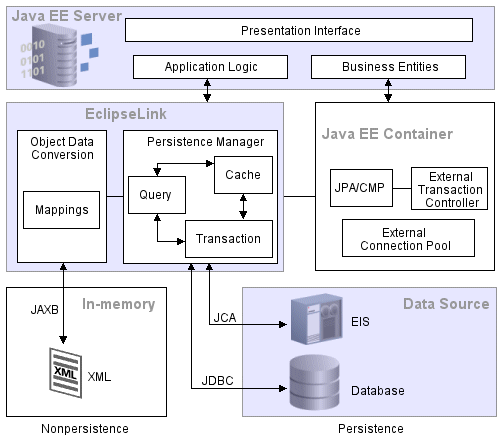Notice: This Wiki is now read only and edits are no longer possible. Please see: https://gitlab.eclipse.org/eclipsefdn/helpdesk/-/wikis/Wiki-shutdown-plan for the plan.
Difference between revisions of "Introduction to EclipseLink (ELUG)"
m (testing images) |
m (moved toc) |
||
| Line 1: | Line 1: | ||
| + | <div style="float:right;">__TOC__</div> | ||
==Introduction to EclipseLink== | ==Introduction to EclipseLink== | ||
EclipseLink is an advanced, object-persistence and object-transformation framework that provides development tools and run-time capabilities that reduce development and maintenance efforts, and increase enterprise application functionality. | EclipseLink is an advanced, object-persistence and object-transformation framework that provides development tools and run-time capabilities that reduce development and maintenance efforts, and increase enterprise application functionality. | ||
Revision as of 09:00, 17 October 2007
Introduction to EclipseLink
EclipseLink is an advanced, object-persistence and object-transformation framework that provides development tools and run-time capabilities that reduce development and maintenance efforts, and increase enterprise application functionality.
What Is EclipseLink?
EclispeLink builds high-performance applications that store persistent object-oriented data in a relational database. It successfully transforms object-oriented data into either relational data or Extensible Markup Language (XML) elements.
Figure 1-1 EclipseLink Runtime Architecture
Using EclipseLink , you can integrate persistence and object-transformation into your application, while staying focused on your primary domain problem by taking advantage of an efficient, flexible, and field-proven solution (see Section 1.2, "What Is the Object-Persistence Impedance Mismatch").
What Is the Object-Persistence Impedance Mismatch
EclipseLink Key Features
EclipseLink Application Architectures
This Page:

